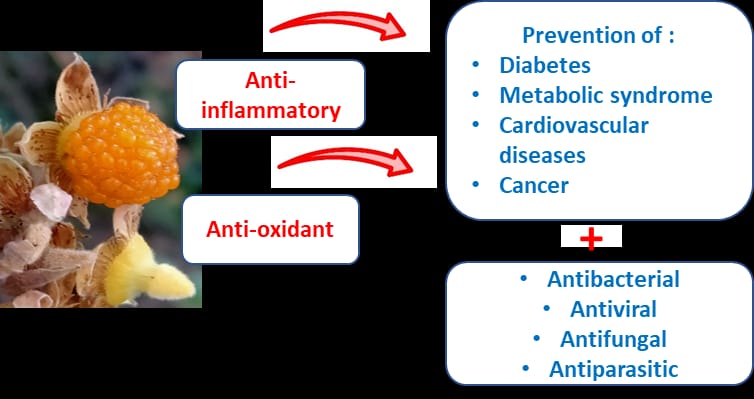JOURNAL 2576
Records of Agricultural and Food Chemistry
Year: 2022 Issue: 2 July-December
p.59 - 74
Viewed 2212 times.
GRAPHICAL ABSTRACT

ABSTRACT
Herbal medicinal plants or products remain very popular around the world despite the large amounts of conventional drugs to treat several illnesses. Among the plethora immensity of medicinal plants, there is Rubus ellipticus, also known as yellow Himalayan raspberry. The traditional use of the plant is for the treatment of cough, fever, constipation, diarrhea, relief of stomach worms in children, and healing of bone fracture. Due to the broad spectrum of possible actions of R. ellipticus, this study aimed to investigate the effects of this plant on health. Google Scholar, PubMed and Embase were searched to perform this review and Preferred Reporting Items for Systematic reviews and Meta-Analyses (PRISMA) guidelines were followed. No Clinical trials were found, however, some in vitro and animal studies were included in this review. R. ellipticus present many bioactive compounds such as ascorbic acid, ellagic acid, ursolic acid, quercetin, kaempferol, and anthocyanins. These compounds are possible responsible for the antioxidant, anti-inflammatory, anti-proliferative, anti-microbial, anti-diabetic, antipyretic, analgesic activities, and wound healing effects. For these reasons, the consumption of this fruit could reduce oxidative stress and anti-inflammatory processes and, therefore, reduce diabetes and metabolic-related diseases such as cardiovascular diseases and cancer. R. ellipticus also has huge economic importance due to its nutritional value and can be used in the food, cosmetics, and pharmaceutical industries.
KEYWORDS- Rubus ellipticus
- anti-inflammatory
- antioxidant
- antimicrobial
- anticancer